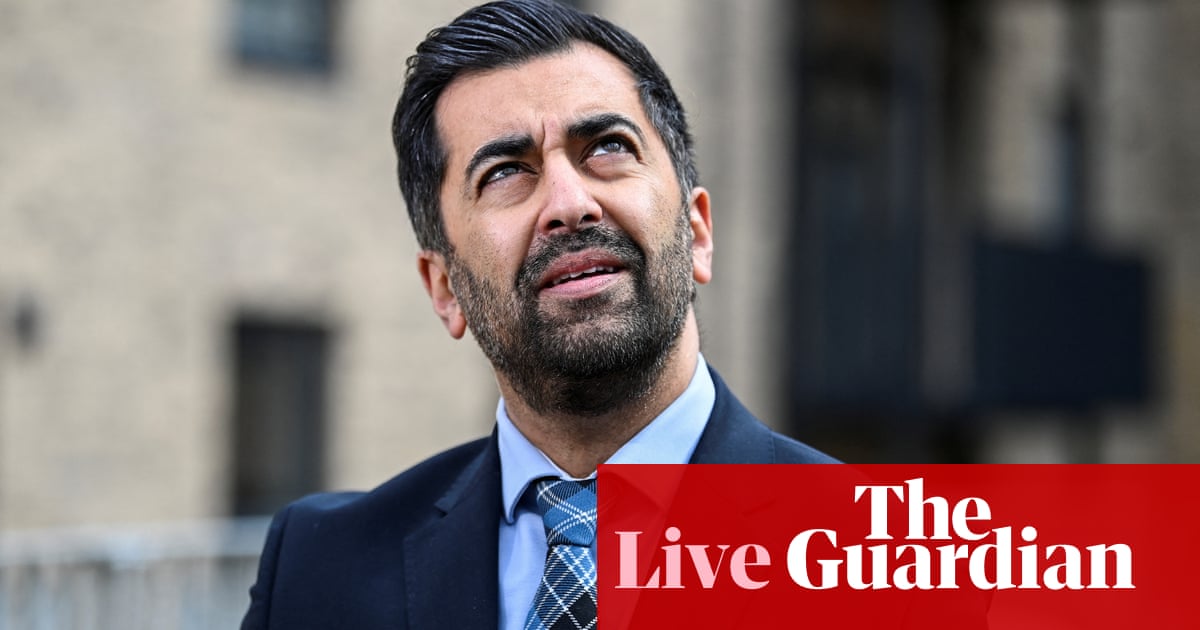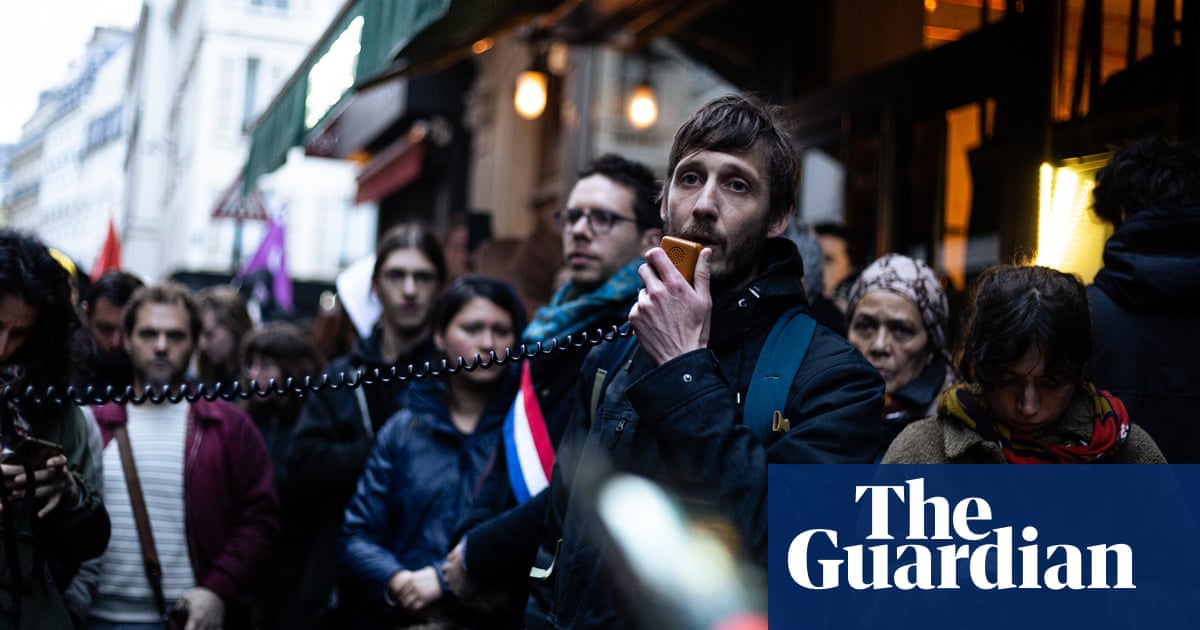Why has the ‘15-minute city’ taken off in Paris but become a toxic idea in UK? | Cities


The “15-minute city” has become a toxic phrase in the UK, so controversial that the city of Oxford has stopped using it and the transport minister has spread discredited conspiracy theories about the urban planning scheme.
But while fake news spreads about officials enacting “climate lockdowns” to “imprison” people in their neighbourhoods, across the Channel, Parisians are enjoying their new 15-minute neighbourhoods. The French are stereotyped for their love of protest, so the lack of uproar around the redesign of their capital is in stark contrast to the frenzied response in Oxford.
Carlos Moreno, a jovial and owlish professor at the Sorbonne University, came up with the phrase “15-minute cities” and has been quietly getting on setting them up in Paris. He has a bemused air when asked about how his modest proposal for a more enjoyable urban life has caused such vile conspiracy theories, and takes it all in good humour despite the death threats and other abuse he has received.
Moreno says: “We don’t have the conspiracy mongers, because it is impossible to say in Paris that Moreno wants to create a new Paris lockdown. This is impossible to say that I am Pol Pot or that I am Stalin – because we live in Paris, I can invite guests to visit me and they see this is impossible.
“We have created a lot of new districts and they have been popular. The opposition in Paris is not the same that you have in the UK, because nobody can say in Paris we want to create an open jail – this is evident that it is not the case. We have beautiful new green spaces and areas to live.”
Moreno has been working with the Paris mayor, Anne Hidalgo, to make its arrondissements more prosperous and pleasurable to live in. He says there are 50 15-minute cities up and running, with more to come.
“We have an outstanding mayor, who is committed to tackling climate change. She said the 15-minute city will be the backbone for creating a new urban plan. The last time Paris had a new urban plan was in 2000, so this road map will be relevant for the next 10 or 15 years at least,” he explains.
“I said to Hidalgo, the 15-minute city is not an urban traffic plan. The 15-minute city is a radical change of our life.”
Moreno has written a new book, The 15-Minute City, about his theory, which is being implemented in cities from Milan to Buenos Aires. In it, he explains his theory, which is quite simple. When many modern cities were designed, they were for men to work in. Their wives and family stayed in the suburbs, while the workers drove in. So they have been designed around the car, and segmented into different districts: the financial district (think Canary Wharf), the cultural area (for example, the West End) and then the suburbs. They have also often been segmented into wealthier and poorer areas; in the less prosperous area to the north-east of Paris, Moreno says up to 40% of homes are social housing. In the wealthier west of Paris, this drops below 5%.
“My idea is to break this triple segregation,” he says.
Moreno thinks this segregation leads to a poorer quality of life, one designed around outdated “masculine desires”, so his proposal is to mix this up, creating housing developments with a mixture of social, affordable and more expensive housing so different social strata can intermingle. He also wants to bring schools and children’s areas closer to work and home, so caregivers can more easily travel around and participate in society. He also thinks office should generally be closer to homes, as well as cultural venues, doctors, shops and other amenities. Shared spaces such as parks help the people living in the areas to form communities.
An example of this is the new Îlot Saint-Germain development in one of Paris’s most chic neighbourhoods. It is situated in the old defence ministry, and flats with sweeping views of the Eiffel Tower go for a social rent of €600 (£515) a month.
Moreno says there was some “aggressive” opposition to this, not from conspiracy theorists but from wealthy Parisians who did not want lower-income people living in their district.
“It was a scandal for the richest to have the working class living here in the 7th arrondissement. They said we will have a reduction in the price of our real estate, there will be more crime. The local mayor of the arrondissement opposed it. But now, it is so, so beautiful with increased quality of life, the development has won awards, it is a desirable place to live.”
The city has also been regenerating the Clichy-Batignolles district in the less prosperous north-west of Paris to have a green, village-like feel. About a quarter of it is taken up by green space and a new park.
“As a 15-minute district, it is incredible,” says Moreno. “It is beautiful, it has proximity, social mixing, 50% of the inhabitants live in social housing, 25% in middle class and 25% own their homes.”
Many of his proposals are dear to the culture of the French. In a large, wealthy metropolis such as Paris, it is easy for small shops to be choked out by large chains. The city of Paris, in its new plan, has put measures in to stop this.
“We have a commercial subsidiary of the city of Paris which has put €200m into managing retail areas in the city with rates below the speculative real estate market. This is specifically to rent to small shops, artisans, bakeries, bookstores. This is not only a good investment because it creates a good economic model, but it keeps the culture of the city of Paris,” says Moreno. This is in keeping with the 15-minute city plan as it keeps local shops close to housing, so people can stroll down from their apartment to pick up a fresh baguette from an independent baker. “It creates a more vibrant neighbourhood,” he adds.
Hidalgo inevitably faced a large backlash from the motorist lobby. Stroll down the banks of the Seine today in the new protected parks and outdoor bars, and it is hard to imagine that it was recently a traffic-choked highway. But with the guidance of Moreno, this became a reality.
In London, there has been a furore around the expansion of the ultra-low emissions zone in London, and attempts to pedestrianise Oxford Street, the city’s busiest shopping district, have failed. So how did Hidalgo do it?
“The drivers were radically very noisy, saying that we wanted to attack their individual rights, their freedom. The motorist lobby said she cannot be elected without our support, that they are very powerful in France,” Moreno says. But Hidalgo called their bluff: “She often says ‘I was elected two times, with the opposition of the automotive lobby’. In 2024, nobody requests to open again the highway on the Seine, no one wants the Seine urban park to be open for cars.”
In his book, Moreno talks about the concept of a “giant metronome of the city” which causes people to rush around. He wants to slow this down, to allow people to reclaim their “useful time” back from commuting and travelling to shops and cultural areas.
Moreno says this is happening with or without him; after the Covid crisis many offices are selling up their large spaces in the financial district and moving closer to residential areas. People are choosing jobs they can work remotely from or that are situated closer to their homes.
“I bet for the next year, for the next decade, we will have this new transformation of corporation real estate,” he says. “Businesses are choosing multi-use areas with housing, schools, shops for their office space now. The time of the skyscrapers in the masculine design is finished.”
The 15-Minute City is out on 7 May..
Source link




